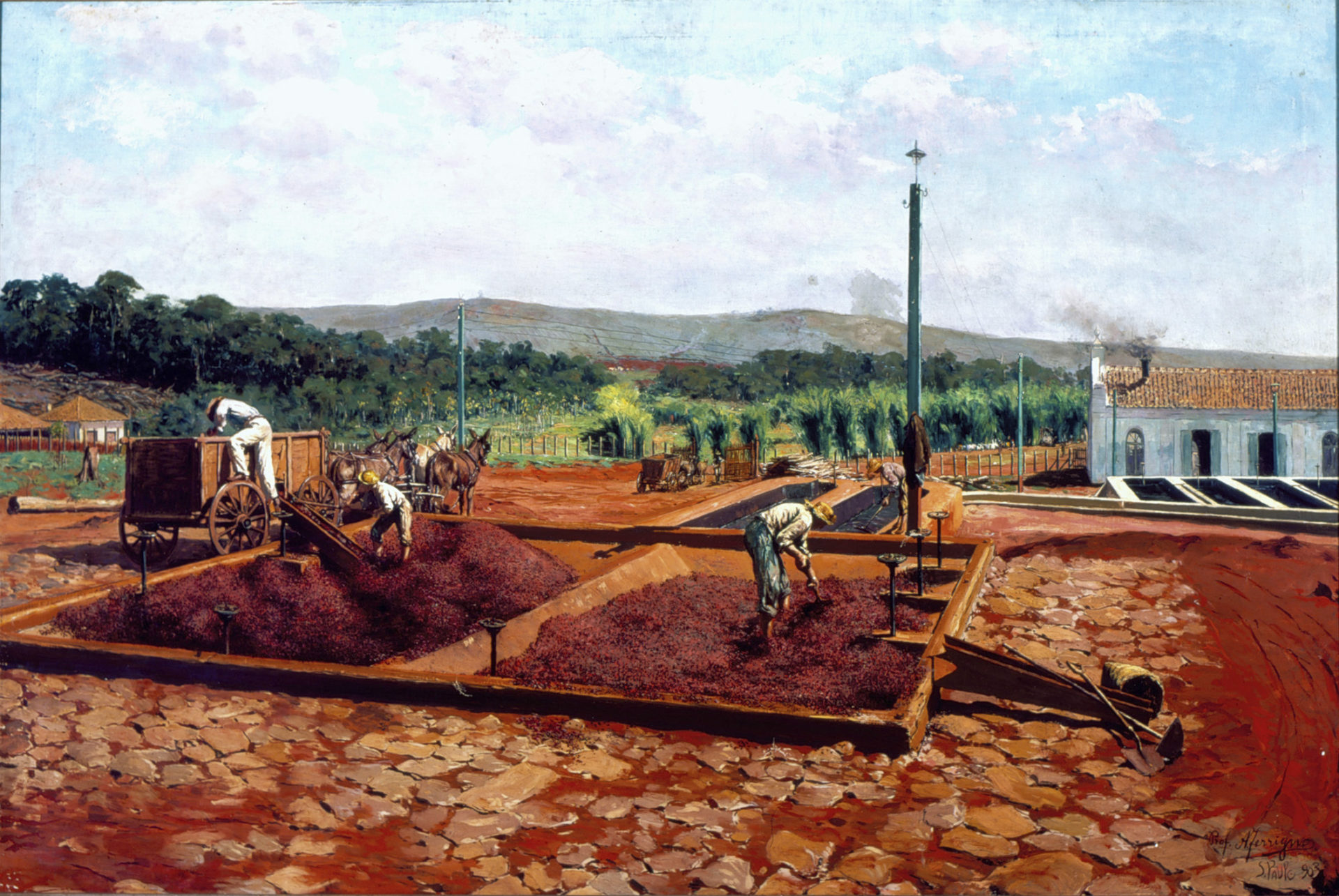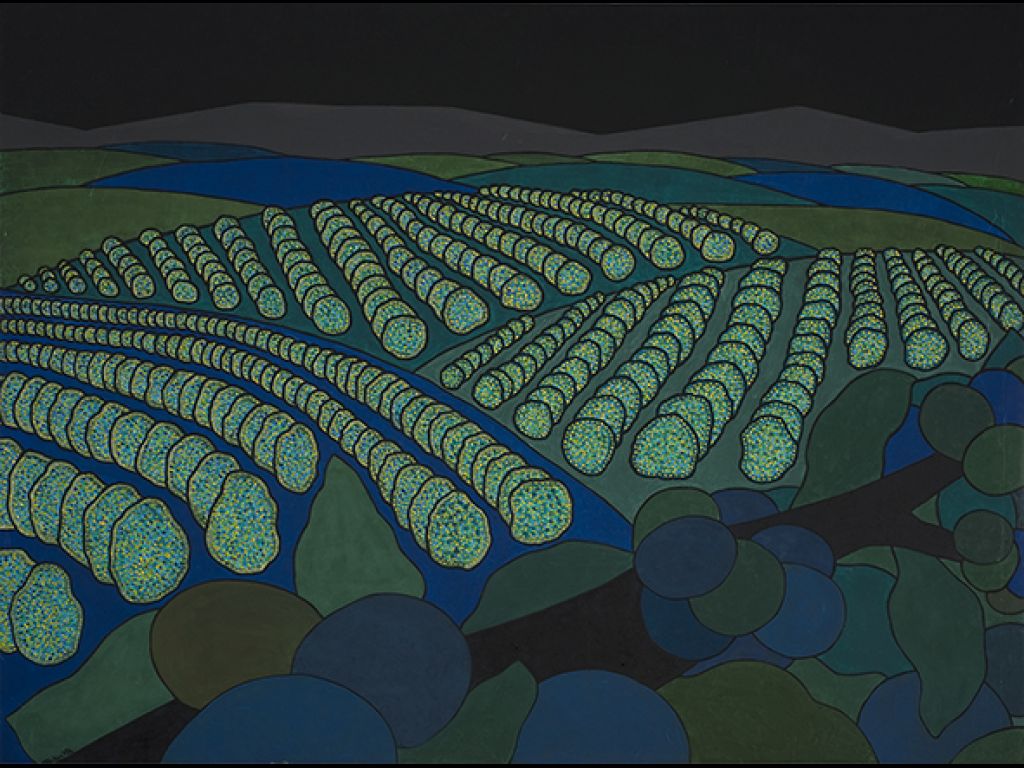Curatorial
Curatorial text
Marília Bonas and
Pedro Nery
7.7 billion inhabitants. More than 190 countries. Countless different cultures and lifeways. The world is big and varied, but many of us share the same habit everyday: drinking coffee, although its many reiterations may differ. On such a diverse planet, coffee is a truly global beverage. Drinking coffee is part of our heritage and as such involves many rites, practices and expertise, all the way from planting through to consuming.
Coffee as we know it has been a favorite beverage for over six hundred years. Its story was originated in Africa before being reinvented in Asia and taking Europe by storm before reaching the Americas to become part of humanity's highly diverse heritage.
The Café Mundo exhibition approaches coffee from this global point of view along two structural axes that spread throughout our space to pose a dialogue: coffee as world heritage and coffee as nutrient feeding into different artistic languages.
Along the first axis, visitors see coffee's supply chain from growing through to consuming – and its history around the globe in the form of a set of interactive tables showing the beverage's journey from plant to cup, its characteristics and 'fun facts' about ways of making and consuming it in different countries.
The highpoint of this first axis is a large showcase – a sort of library of coffee-culture related objects – containing instances of the rich and diverse material culture that has sprung up around the presence of this beverage all over the planet.
'Coffee' and 'culture' are inseparable words in many parts of the world, Brazil included. The many artistic languages that have developed around coffee involve both its historical and economic role and related know-hows, factures and representations. The second curatorial axis reaches across three related areas: photography, music/literature/film and visual arts.
Two small photography exhibitions being shown in São Paulo for the first time are located along the side areas: images from Armínio Kaiser (Salvador/BA, 1925 – Londrina/PR, 2014) and Jorge Panchoaga (Popayán, Colombia, 1984 - ). Rather than traditional Brazilian and Colombian coffee iconography around locations where it is grown and produced, their images here refer to subjects or individuals behind the product (Kaiser) and bodies marked by urban coffee culture in the Latin-American context (Panchoaga).
Honoring coffee and its presence in our homes – not just the beverage as such – Rádio Café highlights aspects of its presence in literature, music and cinema. This content based on extensive research may also be seen on the exhibition's website.
In the module around coffee in Brazilian visual arts, the exhibition takes Antonio Ferrigno's widely recognized pieces that now belong to the collection of USP's Museu do Ipiranga and contrasts them to modern artistic production from Cândido Portinari and Manabu Mabe to formal paintings by Aldir Mendes de Souza that come from FAAP's Brazilian Art Museum and the Santander collection. These images enjoin critical dialogue with contemporary works such as Katia Fiera's artist's book - also from the FAAP collection; Mulambö's painting from the collection of Rio's Art Museum (MAR), and a Naiana Magalhães video from her own collection. The exhibition also features Ismael Ivo's I Had Too Much Coffee (2002), a performance directed by Ralf Schmerberg.
Café Mundo's visual arts module also features an installation that Raquel Fayad developed especially for the exhibition. Part of a series of coffee related pieces, here she presents Flor do desejo (flower of desire): cups are piled high and there are tinkling sounds as coffee is being made, thus heightening senses parallel to those usually stimulated by the beverage, such as its aroma and earth-colored appearance, also recalling the white blooms of flowering coffee plants.
Finally, Café Mundo enhances the visitor experience and reflection by adding the contents of a large immersive room that dialogs across coffee's many layers of history and meanings shown in the exhibition.
Café Mundo hopes to respond to the aspirations of thousands of people involved in coffee's supply chain, from growers to passionate consumers, by sharing its wealth and importance, as well as its power - as part of our heritage - to interconnect cultures.
Marília Bonas & Pedro Nery — Curators




